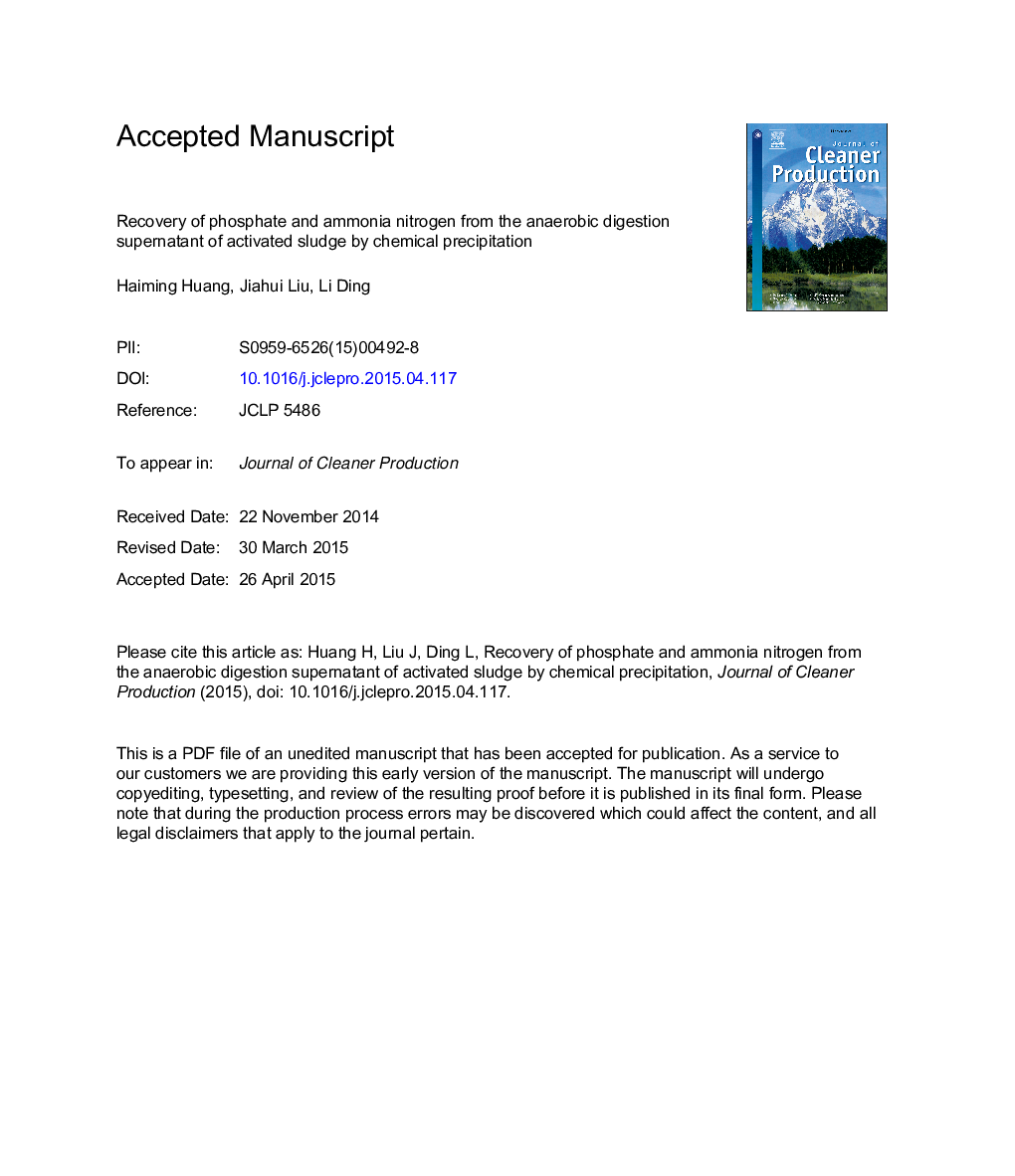| Article ID | Journal | Published Year | Pages | File Type |
|---|---|---|---|---|
| 8103877 | Journal of Cleaner Production | 2015 | 34 Pages |
Abstract
This paper presents a study of the method used in recovering PT (the total orthophosphate) from the anaerobic digestion supernatant of sludge via chemical precipitation. The PT recovery efficiencies of three metal salts (AlCl3, CaCl2 and MgCl2) at different pHs were investigated. The results indicated that the pH of the solution exerts a significant effect on the PT recovery by chemical precipitation. The preference order of the three metal salts for the phosphate recovery is MgCl2Â >Â CaCl2Â >Â AlCl3 at the optimal pH range. Moreover, the phosphate precipitate of MgCl2 has a better settleability compared with those of AlCl3 and CaCl2. The alkalinity of the supernatant exerts a significantly negative effect on the phosphate precipitation of CaCl2 and MgCl2, especially on that of CaCl2. When the alkalinity increased from 0Â mg/L to 1968Â mg/L, the PT recovery efficiency of CaCl2 decreased from 94% to 85.4%. To overcome this problem, the CO2 degasification technique was used in the chemical precipitation. The effect of the alkalinity was then found to be almost completely eliminated at an airflow rate of 8Â L/min and a stripping time of over 60Â min. The results of the experiments of air stripping combined with struvite precipitation using low-cost MgO showed that it is possible to recover approximately 100% of PT and 50% of the Total Ammonia Nitrogen (TAN) from the supernatant. An economic evaluation revealed that the PT recovery cost of the combined process was $ 0.38 per kg PT, which was far lower than that of extracting P from phosphate rock.
Related Topics
Physical Sciences and Engineering
Energy
Renewable Energy, Sustainability and the Environment
Authors
Haiming Huang, Jiahui Liu, Li Ding,
